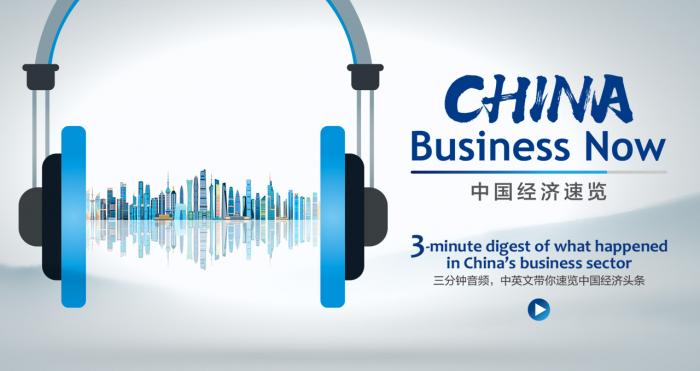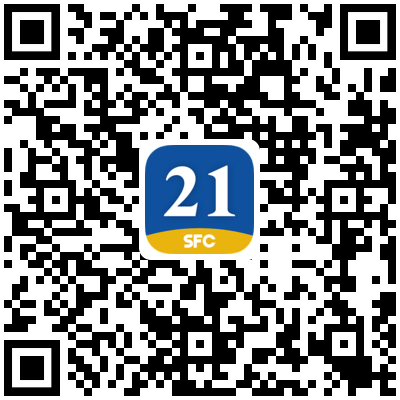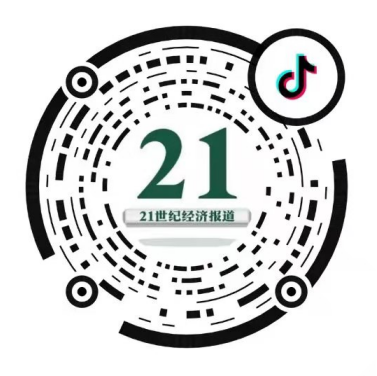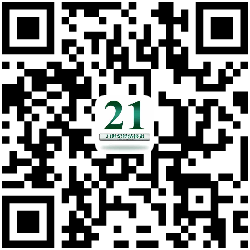S: Hi everyone. Welcome to CBN Friday special, I am Stephanie LI.
R: And I am ZHANG Ran.
S: Ran, the Dragon Boat Festival is only a week away, have you decided where to spend your three-day holiday?
R: Yeah, I am so excited about it. I’ve planned to go camping with my friends in the Conghua district in Guangzhou. Imagine that we set up a tent on the green grass lawn, prepare food for the barbecue, walk beside the stream and embrace the sun...Oh, I can’t wait for my holiday.
S: That's nice! Actually, I also went camping and picnicking with my family in a forest park during the Labor Day holiday. And I was surprised by the number of people there! Tents of different colours and shapes can be seen everywhere on the lawn, and you wouldn’t even get any spot to set up your own if you arrive late. People now prefer short-distance or community-based trips rather than long-distance ones as strict epidemic prevention and control policies are in place for cross-provincial travels. And camping has become a favourable choice for people to spend their holiday, which enables them to relax outdoors without traveling too far.
R: Yes. According to a report released by China’s travel platform Tongcheng, camping-related searches increased by 117 percent from April during the May Day holiday with forests and islands among the most popular campsites. Meanwhile, during this Labour Day holiday, searches related to camping on Xiaohongshu, one of China’s lifestyle social platforms, has increased by 746 percent year-on-year, and there are more than 3.7 million posts related to camping created by users.
Besides, the scale of China's camping market increased from 7.71 billion yuan in 2014 to 29.9 billion yuan in 2021, and it’s expected to grow by 18.6 percent in 2022 to 35.46 billion yuan, according to a report released by iiMedia Research. The COVID-19 epidemic has forced many people to give up long-distance travel plans, but it has seen a rise in short-distance leisure camping. With summer around the corner, China’s camping market is expecting a boom.
S: I agree. The other day while I was shopping for camping gears on one of China’s biggest e-commerce giants JD.com, I was surprised to find that some of the sleeping bags and tents of a couple of outdoors equipment brands had already run out of stock. You know, the so-called post-80s and 90s account for nearly 90 percent of the consumption related to camping. So Ran, as a member of the younger generation, which type of camping do you prefer?
R: Hmm, I don’t know, there’re so many great choices I want to try. But if I had to choose one, I probably want to camp under the stars or in a forest, and, of course, with delicious food. Nowadays, many campsites even provide barbecue and coffee. And Stephanie, I recommend you to visit some campsites that are close to parent-children parks or children’s playing facilities. For example, the AMPM Campsite at Tianlu Lake Forest Park in Guangzhou has many amenities such as coffee shops, children playgrounds and fishing spots. I believe you will have a great time there with your family.
S: Thanks! That’s sounds wonderful, I’ll definitely go check it out. But I don’t know if you’ve checked the weather forecast... Unfortunately, there’s big chance that it’ll rain during the Dragon Boat Festival. So actually, I’ve decided to visit the Guangdong Museum with my family, trying to stay indoors and avoid getting wet.
R: What? Oh no...
S: Come on, visiting museums is another good choice! Have you watched the documentary named “Masters in The Forbidden City”, which shows the collections and antiques in the Palace Museum? Or the Poetic Dance named “The Journey of a Legendary Landscape Painting”, which demonstrates the story of a painting in the Song Dynasty? These are two very good examples of works featuring Chinese history and culture, which attract many people to visit museums and learn about them.
Last month when I was browsing through travel platform Ctrip, I saw several people sharing their experiences visiting different museums. And according to the platform, tickets booked for local museums in the Labour Day Holiday increased by 260 percent compared with the Qingming Holiday this year.
R: Well, I suppose there’s one more thing in common for camping and visiting museums: they are both popular among young people. Data shows that more than 70 percent of museum visitors are born in the 1980s and 1990s. And visitors of Gen-Z, or people who were born between 1995 and 2009, account for nearly 25 percent of the total. As a result, museums are also going through changes to meet the needs of the public, especially the younger generation. For example, museums start to pay attention to the designs and developments of their cultural and creative products.
S: That’s right. Museums in China are incorporating their precious collections into artistic designs to develop unique cultural and creative products catering to young people. For example, with the popularity of blind boxes, museums including Guangdong Museum and Henan Museum have rolled out archaeological blind boxes. They creatively integrated the blind box concept with cultural relics, and hid "miniature cultural relics" such as bronze and china in the soil. It requires buyers to use a Luoyang shovel to dig their archaeological blind box and a brush to sweep away the dirt. Finally, buyers will harvest a relic like a piece of bronze-ware from the Shang Dynasty.
R: It’s both fun and educational! And I know that last week Guangdong Museum has released a series of underwater archaeological blind boxes just a few blocks away. I think I’ll go get one and experience the joys of digging up cultural relics as an archeologist!
S: For kids, being able to be a part of the “archaeological discovery” will bring them not just a fun experience, but also a good opportunity to cultivate their interest in the Chinese history and culture.
R: Right. In order to attract the younger generation, museums are also making their products to be more bourgeois like lipsticks, more practical like laptop bags, and tastier like snacks. For example, the Palace Museum lipsticks has become a much sought-after item as their packages are decorated with beautiful motifs from the attire worn by the historical residents of the Forbidden City. And last year, the Sanxingdui Museum rolled out two ice popsicles shaped like the bronze face masks excavated from the site, with the flavor of "bronze" matcha and "excavation" chocolate.
S: Apart from delivering more creative products, museums are also following the trend of digitalisation by live-streaming the exhibitions. Like in 2020, the Palace Museum hosted a two-day online live-streaming tour with online travel agency Tuniu, which enabled netizens to visit key sites of the Forbidden City at home, guided by experienced tour guides as they explained the historical relics on live shows.
R: Wonderful! It will be so great to visit museums in other cities online, especially when going on long-distance travel has become harder during the pandemic. With more creativity and convenience, museums are providing visitors with better experience and more ways to gain knowledge of historical relics. On the other hand, young people's demand for personalised and immersive experiences has encouraged museums to constantly upgrade their technology and service.
S: And for the tour guides who are forced to leave their jobs as group travelling has gone on a long halt due to the ongoing pandemic, live-streaming services of museums have offered them chance to do their old jobs in a new way.
In 2020, the Ministry of Culture and Tourism released a document that required local governments to support jobless tour guides by carrying out free online training to help improve their professional skills. For example, a tour guide can learn and become a travel blogger on social media. And for travel agencies, they may also get inspiration from the trend of visiting museums to update their products. For example, integrating cultural and museum trips into traditional tourist routes sounds like a good idea.
R: Oh, I’m getting more and more excited about the coming holiday. Hey Stephanie, would you recommend me some exhibitions for the holiday?
S: My pleasure! So what kind of exhibitions do you prefer ……
端午假期临近,你想好去哪儿玩了吗?是露营野餐、户外运动、赏花骑行,还是本地博物馆一日游?
今年五一小长假,“露营”是各大社交平台上最热门的关键词之一。同程旅游数据显示,2022年“五一”假期,“露营”相关旅游搜索热度环比上涨117%。在露营消费群体中,90后年轻用户和80后亲子人群成为主力,占比近9成。小红书数据显示,今年“五一”期间,小红书上露营相关搜索量同比增长746%,相关露营笔记已超过370万篇。而从市场规模来看,据艾媒咨询报告显示,2014年到2021年,国内露营营地市场规模从77.1亿元猛增至299亿元,增长率18.5%。疫情基本控制后,预计2022年增速达到18.6%,市场规模达到354.6亿元。
目前,露营行业年轻化特征显著。年轻游客群体不仅仅要露营,更想要玩出花样。年轻人更多会选择露营+烧烤、露营+咖啡的搭配模式,“露营+”各种花式搭配备受欢迎。而对有孩子的父母群体而言,露营+亲子的露营搭配则是他们考虑的第一要素。他们会考虑露营营地周边有没有相关的亲子设施,有的还会选择露营+喝茶,甚至露营+户外郊游的玩法。
在疫情反复背景下,无法远行的人们开始把露营作为一种新的生活方式。在京东上多家户外品牌的部分睡袋或帐篷甚至都卖断了货。有专家指出,受疫情不确定性和管控因素的影响,在多地“非必要不出省”的倡议下,人们出行可选范围和时长受到限制,出行半径逐渐缩短。短距离、少切换的本地深度游和品质游是主流趋势。以享受户外风光为核心的露营正成为游客休闲的新热点。
与此同时,“文博游”也渐渐成为居民出游的优选。
近年来,从《我在故宫修文物》到《只此青绿》,文博元素在荧幕上的呈现,让文化遗产变得愈发鲜活。这不仅唤醒了人们对博物馆和历史文化的兴趣,也让文博游真正“火”了起来。
携程数据显示,今年1-5月,博物馆展览馆排在国内最受欢迎景区第四位,每10个从携程预订景区门票的游客中,就有1个预约了博物馆。游客不仅爱逛博物馆,同时也爱分享见闻。携程社区数据显示,2022年上半年博物馆相关笔记数量同比增加约80%。
在文博游中,年轻人仍然是消费群体的主力。数据显示,文博游的用户年龄主要以80、90后为主。今年上半年通过携程预订博物馆的用户,80后占比达42%,90后占比29%。此外,上半年“Z世代”预订博物馆订单的占比达到25%。由此可见,随着年轻人对中国传统文化的认同感不断升级,以博物馆为代表的文化类景点在年轻旅行者中的热度与日俱增。
用户的年轻化也给博物馆带来新的挑战,陈列文物、展品已不足以满足当下年轻人的需求,如何创新、增加互动性成为博物馆维持“热度”亟需解决的问题。
“网红”河南博物院的年轻化路径颇值得一说。近年来,河南博物院接连推出了以考古和文物修复为主题的系列盲盒。只要戴上白手套、拿起洛阳铲和刷子,每个人都能成为“考古官”。以时下流行的盲盒为切入点,广东省博物馆也在“5·18国际博物馆日”举办“广东博物馆文化创意产品展”,首次展出“水下考古盲盒”等一批新开发的文创新品。
不少家长表示,博物馆推出“脑洞大开”的文创盲盒,颠覆了他们对博物馆纪念品的“刻板印象”。以文物修复盲盒为例,孩子和家长共同参与挖土、寻宝等一系列“仿真”考古过程,既能加强亲子之间的互动,又能培养孩子对历史文化的兴趣。
伴随博物馆盲盒、故宫博物院口红、三星堆雪糕、环保袋等文创产品频登热搜,博物馆们开始积极探索,进一步建立与潜在受众之间的强连接。
近几年,博物馆的讲解模式赶上“云潮流”,开启了直播新“副本”。疫情期间,故宫博物院在“云端”媒体平台上举办了为期两天的在线直播之旅,人们足不出户就可以跟随直播走进故宫;而途牛的“随往北京”视频号则率先将博物馆深度讲解作为户外景点直播的重中之重,线上观众跟随途牛“金牌导游”的镜头和讲解,就能身临其境,“云”享受一场场文化盛宴。
年轻人对个性化、体验感的需求,催生博物馆从技术到服务不断迭代升级。越来越多博物馆依托全新的技术,探索新方式增加个性化、沉浸式的体验,活化历史,拉近馆藏文物与人们生活的距离。
而博物馆的火爆,也会给旅游业及其从业人员带来更多发展机会。
随着文博资源的深度化、精细化开发,“文博+展览”“文博+演艺”“文博+研学”等亲子主题的定制化文博游产品如雨后春笋般涌现。众多旅行社在产品开发设计方面获得启发,将文博元素深度融入到传统旅游路线中,进一步推动旅游产品迭代升级。
疫情之下,对于面临“就业空窗期”的导游群体而言,博物馆直播让他们看到了新的契机。2020年,文化和旅游部下发《关于积极应对疫情影响保持导游队伍稳定相关工作事项的通知》,要求各地指导支持旅行社开展形式多样的线上免费培训,帮助导游提升专业素养。

Executive Editor: Sonia YU
Editor: LI Yanxia
Host: Stephanie LI
Writer: Stephanie LI, ZHANG Ran, XIE Kaishan
Sound Editor: ZHANG Ran, XIE Kaishan
Graphic Designer: ZHENG Wenjing, LIAO Yuanni
Co-produced by 21st Century Business Herald Dept. of Overseas News & SFC Audio/Video Dept.
Presented by SFC
编委: 于晓娜
策划、编辑:李艳霞
播音:李莹亮
撰稿:李莹亮、张然、谢凯珊
音频制作:张然 、谢凯珊
设计:郑文静、廖苑妮
21世纪经济报道海外部 南财音视频部 联合制作
南方财经全媒体集团 出品





















 粤公网安备 44010402000579号
粤公网安备 44010402000579号